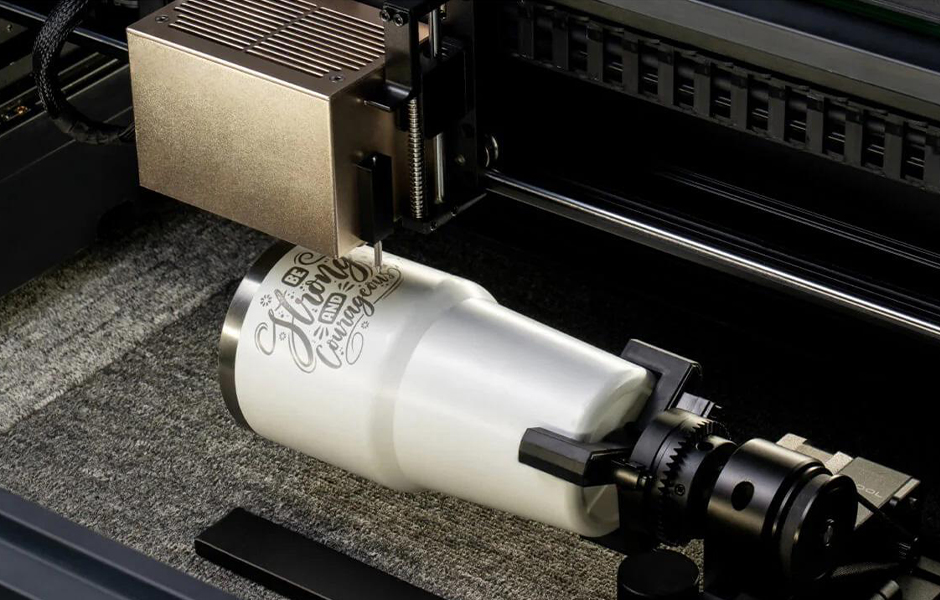
When an ordinary stainless steel water bottle is endowed with a unique identifier, it becomes a mobile brand billboard, a vessel for emotion, or an expression of art. Whether showcasing corporate image or commemorating a personal story, choosing the right customization process is crucial. This article will take you on an in-depth exploration of 12 mainstream customization technologies to help you make the smartest decision.
I. Key Considerations Before Choosing a Process
Before deciding on a process, consider these core questions:
Design Complexity: Is it single-color text or a colorful gradient pattern? Is a 3D effect needed?
Durability Requirements: Does it need to withstand daily scratches and frequent washing?
Budget & Quantity: Is it a small custom order or mass production?
Substrate Compatibility: Is your bottle’s surface matte, glossy, or color-coated? Is the shape complex?
Texture Needs: Do you want a tactile, raised/indented feel or a smooth surface?
II. In-Depth Analysis of Twelve Customization Processes
1. Laser Engraving — The Timeless Classic
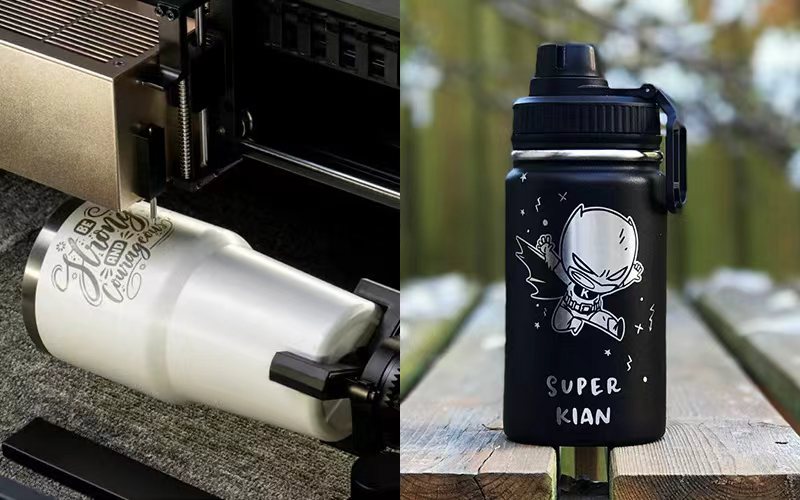
Principle: Uses a high-precision laser beam to vaporize surface material, forming a permanent mark.
Effect: Presents silver-gray marks on raw stainless steel; reveals underlying metal color on coated surfaces; distinct tactile feel.
Advantages: Extremely durable, never fades, environmentally friendly, no pollution.
Limitations: Limited to single-color representation.
Best For: Company logos, serial numbers, simple graphics.
2. Thermal Transfer — The Image Transfer Expert
Principle: The pattern is first printed on a special release film, then transferred onto the object’s surface through heat and pressure.
Effect: Can print full-color pictures and complex patterns; the pattern adheres to the surface after the film is peeled off.
Advantages: Bright colors, high pattern reproduction accuracy; suitable for complex curves.
Limitations: Durability is weaker compared to laser engraving, may wear with long-term use or scraping; requires a high-temperature resistant bottle coating.
Best For: Medium batches, products requiring high color quality but not extreme usage intensity.
3. Water Transfer Printing — Endless Pattern Possibilities
Principle: Also known as “water transfer printing,” uses water pressure to dissolve a soluble PVA film printed with a colored pattern, allowing the pattern to wrap and adhere to the product surface.
Effect: Achieves complex and continuous full-wrap effects like marble, camouflage, wood grain, cartoon patterns; seamless.
Advantages: Extremely strong adaptability to irregular curved surfaces (e.g., bottle curvature); almost unlimited pattern choices.
Limitations: Each product’s pattern is unique, cannot be precisely positioned; surface requires protective paint spraying to enhance durability.
Best For: Products pursuing personalized, artistic appearances, like trendy items, themed limited editions.
4. UV Digital Printing — The Art of Color
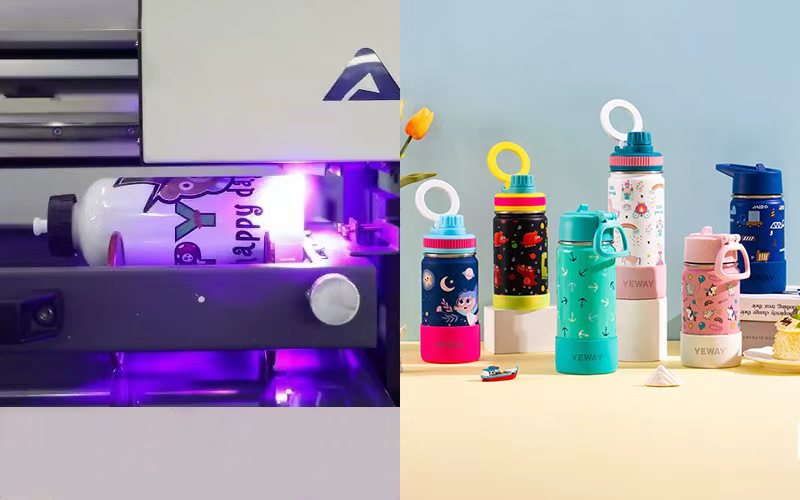
Principle: UV ink is sprayed through precision print heads and instantly cured by ultraviolet light.
Effect: Supports full color gamut and complex gradients; accurately reproduces photos and details; flat, smooth surface.
Advantages: No color limitations, suitable for small batch customization.
Note: Requires a protective layer to enhance wear resistance.
Best For: Team photos, artwork, colorful logos.
5. Air Transfer Printing — Precision Placement Printing
Principle: An upgraded version of hydro dipping. The pattern is pre-printed on a special carrier film, which is precisely wrapped and fitted to the product surface using equipment and air flow, then heated to adhere the pattern.
Effect: Similar to hydro dipping, enables complex pattern wrapping.
Advantages: Compared to traditional hydro dipping, allows for precise positioning of patterns, avoiding randomness; higher transfer efficiency, more stable quality.
Limitations: High equipment investment cost; also requires subsequent protective spraying.
Best For: High-end customization requiring precise pattern placement, e.g., specifying the logo must appear in the center of the bottle.
6. Chemical Etching — The Way of Precision
Principle: Uses chemical agents to selectively corrode the metal surface.
Effect: Finer detail representation than laser engraving; etching depth can be controlled; overall texture is uniform.
Advantages: Suitable for ultra-fine lines and tiny text.
Note: Requires strict environmental waste handling.
Best For: Water bottles for precision instruments, medical devices.
7. 3D/5D Effect Printing — Stereoscopic Vision
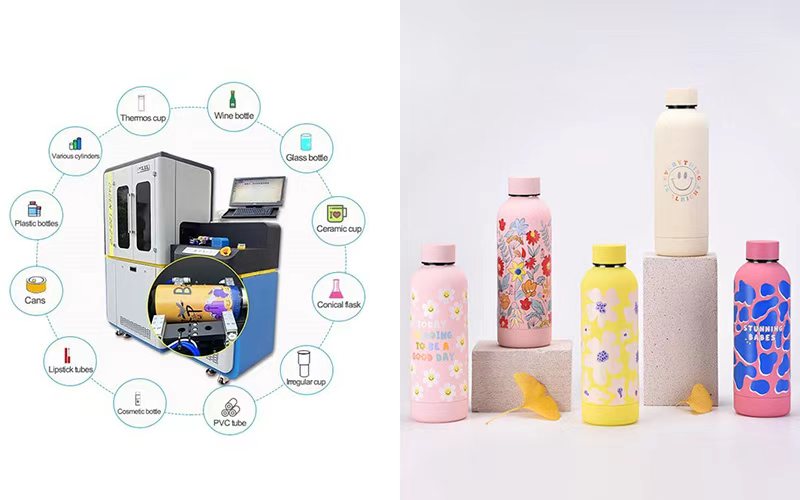
Principle: Based on UV printing technology, uses special varnish coatings and image design to create visual effects of raised areas, depressions, glitters, etc. (5D typically combines 3D, glitter, texture, and other sensory experiences).
Effect: Patterns have obvious stereoscopic feel and gloss variation; can present glitter, color-shifting effects from different angles; touch is smooth but visually layered.
Advantages: Extremely gorgeous visual effects, novel and attractive; completed in one print run, efficient.
Limitations: Requires high-quality design files; still needs a protective layer to prevent scratching.
Best For: High-end promotional gifts, brand designs requiring strong visual impact.
8. Embossing/Debossing — The King of Tactility
Principle: Uses precision molds and high pressure to press concave or convex 3D patterns into the metal surface. Embossing creates raised effects, Debossing creates recessed effects.
Effect: Has a very strong and permanent立体触感 (3D tactile feel); premium, classic.
Advantages: Effect is permanent, extremely durable; tactile experience is irreplaceable.
Limitations: Requires mold creation, high upfront cost, only suitable for very large batches; cannot represent complex colors.
Best For: Signature brand products or long-term production basic models, pursuing the ultimate tactile experience.
9. Enamel Filling — Vintage Luxury
Principle: Colored enamel glaze is filled into engraved recesses.
Effect: Has a jewel-like, luxurious texture; colors are bright and long-lasting.
Advantages: Combines the durability of engraving with the beauty of color.
Limitations: Complex process, higher cost.
Best For: High-end gifts, commemorative custom items.
10. Screen Printing — The Choice for Large Volumes
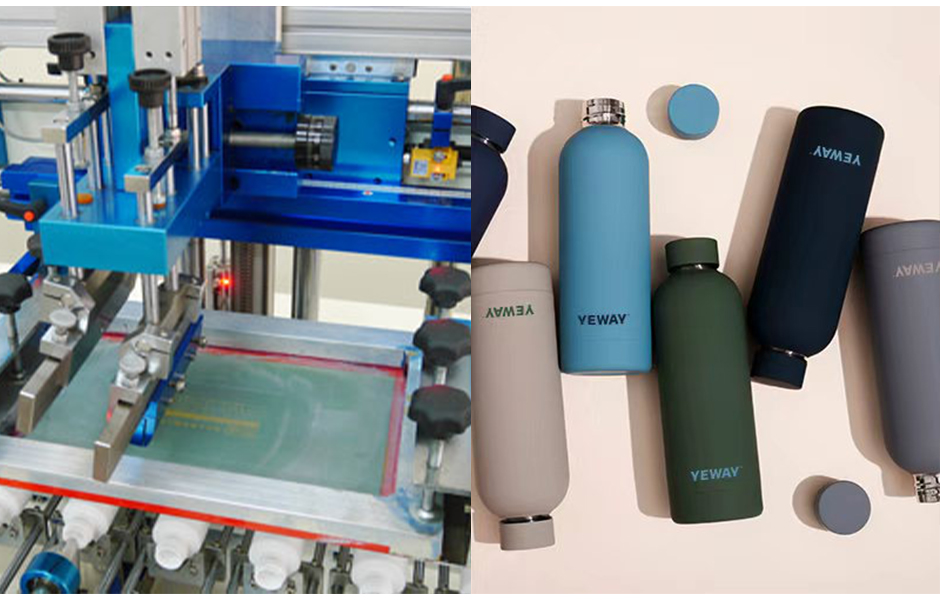
Principle: Ink is transferred through a mesh screen onto the surface.
Effect: Color blocks are vibrant and solid; ink layer has slight thickness.
Advantages: High cost-effectiveness for large volumes.
Limitations: High setup (screen) cost, not suitable for small batches; weak gradient color representation.
Best For: Orders of 1000+ units with simple color block designs.
11. Electropolishing — The Shining Effect
Principle: Uses electrochemical treatment to create a mirror-like effect on the marked area.
Effect: Creates a glossy contrast on a matte background; effect is refined and subtle.
Advantages: No ink, no engraving, completely environmentally friendly.
Limitations: Only applicable to raw stainless steel color.
Best For: Minimalist styles, understated luxury designs.
12. Sandblasting — Textural Contrast
Principle: Uses masking to protect areas while blasting the surrounding surface.
Effect: Creates a fine matte textural contrast; tactile feel is soft.
Advantages: No chemicals added.
Best For: Large logos and text.
III. Creative Content Inspiration Library
Make your custom bottle tell a unique story:
- Corporate Use: Logo + Core Values + Slogan combination.
- Team Building: Member signatures + motivational slogans + theme patterns.
- Personalization: Memorial dates, location coordinates, personal quotes.
- Special Ideas: Hidden engraving (visible from specific angles), thermochromic effects, 3D optical illusion patterns.
IV. Decision Guide: Find Your Perfect Process
Quick match based on your needs:
- Prioritize Durability → Laser Engraving, Chemical Etching, Embossing
- Need Color Effects → UV Printing (incl. 3D/5D), Enamel Filling, Thermal Transfer
- Complex Curves/Full-Body Patterns → Hydro Dipping, Air Transfer Printing
- Large Volume Production → Screen Printing, Embossing
- Pursue Texture → Sandblasting, Electropolishing, Embossing
- High-End Gifts/Visual Effects → Enamel Filling, 3D/5D Printing, Combined Processes
Confirm the bottle’s base material, surface finish, and shape complexity.
Define the usage scenario and durability requirements.
Prepare high-quality source design files.
Request physical samples to confirm the effect.
V. Conclusion: Let Every Detail Tell Your Story
Choosing the right customization process is the decisive step in transforming a utilitarian object into a work of art. From the eternal promise of laser engraving, to the dazzling expression of UV printing, to the endless possibilities of hydro dipping, each process tells a different brand language.
Our customization experts are ready to provide advice on process selection and offer free effect mockups, allowing you to preview the finished product before deciding. Contact us for a personalized plan and let your water bottle become the most compelling storyteller for your brand.

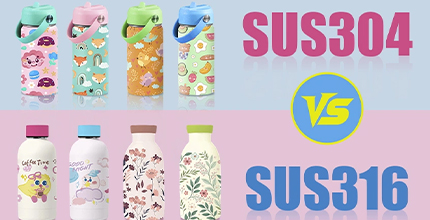
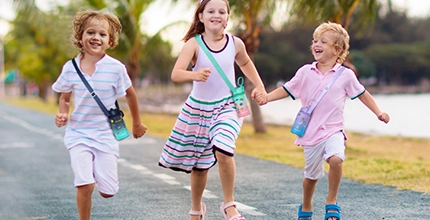
![2025 Global Kids Water Bottle Market TrendsA B2B Manufacturer's Strategic Guide | [YEWAY]](https://yewaydrinkware.com/wp-content/uploads/2025/11/2025-Global-Kids-Water-Bottle-Market-Trends.jpg)
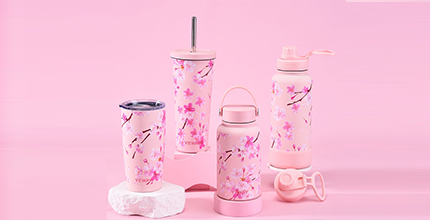
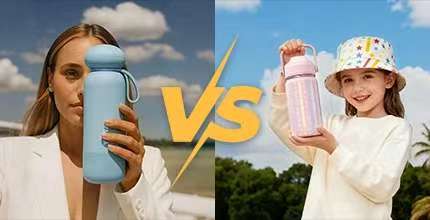
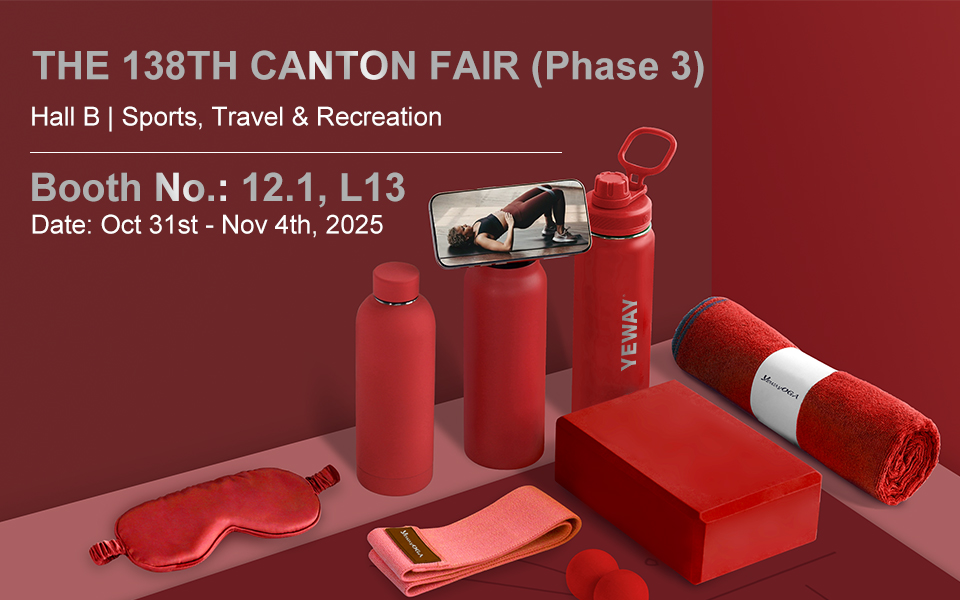
Leave a Reply